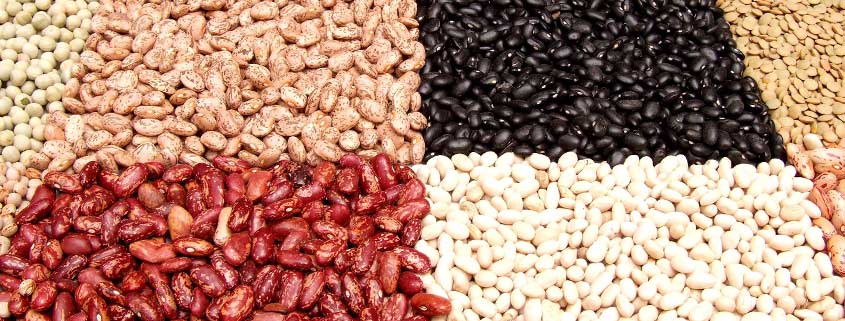
Iron is a mineral found in every cell of the body. Iron is considered an essential mineral because it is needed to make part of blood cells. The human body needs iron (Iron Supplements For Diabetics) to make the oxygen-carrying proteins hemoglobin and myoglobin. Hemoglobin is found in red blood cells and myoglobin is found in muscles.
Iron also makes up part of many proteins in the body. Food Sources: Are some foods with iron better than others? Food has two types of iron — heme iron and non-heme iron. Heme iron is found in meat, fish, and poultry, and is the form of iron that is most readily absorbed from your stomach and taken up into your body after you eat it. Non-heme iron is found in plant foods as well as meat. Foods with non-heme iron are still good to eat, but the iron contained in these foods won’t be absorbed as completely as heme iron. You absorb up to 30 percent of heme iron, found only in animal tissues (meat, poultry, and fish). You absorb 2-10 percent of non-heme iron, found in plant foods as well as meat. Eating meat generally boosts your iron levels far more than eating non-heme iron. When you eat heme iron with other sources of non-heme iron, the iron is more completely absorbed. For example, foods high in vitamin C, like tomatoes, citrus fruits, and red, yellow, and orange peppers can also help with the absorption of non-heme iron.
The following foods are good sources of heme iron (from animal sources):
- Chicken liver
- Oysters
- Clams
- Beef liver
- Beef (chuck roast, lean ground beef)
- Turkey leg
- Poultry, dark red meat
- Tuna
- Eggs(especially egg yolks)
- Shrimp
- Leg of lamb
- Salmon
- Reasonable amounts of iron are also found in lamb, pork, and shellfish.
The following foods are good sources of non-heme iron (from plants):
- Raisin bran (enriched)
- Instant oatmeal
- Iron-fortified cereals
- Beans and Legumes (kidney, lima, Navy, Soybeans, Dried beans, and peas)
- Tofu
- Dried fruits: prunes, raisins, apricots
- Lentils
- Molasses
- Whole wheat bread
- Peanut butter
- Brown rice
- Seeds (almonds, Brazil nuts)
- Vegetables
- broccoli
- spinach
- kale
- collards
- asparagus
- dandelion greens
- Whole grains
- wheat
- millet
- oats
- brown rice
Some foods can reduce iron absorption. For example, commercial black or pekoe teas contain substances that bind to iron so it cannot be used by the body. Side Effects of Iron LOW IRON LEVELS. The human body stores some iron to replace any that is lost. However, low iron levels over a long period of time can lead to iron deficiency anemia. Symptoms include lack of energy, shortness of breath, headache, irritability, dizziness, or weight loss.
Those at risk for low iron levels include:
- Women who are menstruating, especially if they have heavy periods
- Women who are pregnant or who have just had a baby
- Long-distance runners
- People with any type of bleeding in the intestines (for example, a bleeding ulcer)
- People who frequently donate blood
- People with gastrointestinal conditions that make it hard to absorb nutrients from food
Babies and young children are at risk for low iron levels if they do not receive the appropriate foods. Babies moving to solid foods should eat iron-rich foods. Infants are born with enough iron to last about six months. An infant’s additional iron needs are met by breast milk. Infants that are not breastfed should be given an iron supplement or iron-fortified infant formula. Adolescents are more prone to low iron levels because of rapid growth rates and inconsistent eating habits. TOO MUCH IRON. The genetic disorder called hemochromatosis affects the body’s ability to control how much iron is absorbed. This leads to too much iron in the body. Treatment consists of a low-iron diet, no iron supplements, and phlebotomy on a regular basis. It is unlikely that a person would take too much iron. However, children can sometimes develop iron poisoning by swallowing too many iron supplements.
Symptoms of iron poisoning include:
- Fatigue
- Anorexia
- Dizziness
- Nausea
- Vomiting
- Headache
- Weight loss
- Shortness of breath
- Grayish color to the skin
Recommendations
The Food and Nutrition Board at the Institute of Medicine recommends the following for iron:
Infants and Children
| Younger than 6 months | 0.27 milligrams mg/day |
| 7 months to 1 year | 11 mg/day |
| 1 to 3 years | 7 mg/day |
| 4 to 8 years | 10 mg/day |
Males
| 9 to 13 years | 8 mg/day |
| 14 to 18 years | 11 mg/day |
| Age 19 and older | 8 mg/day |
Females
| 9 to 13 years | 8 mg/day |
| 14 to 18 years | 15 mg/day |
| 19 to 50 years | 18 mg/day |
| 51 and older | 8 mg/day |
Women who are pregnant or producing breast milk may need different amounts of iron. Ask your health care provider what is appropriate and best for you.
